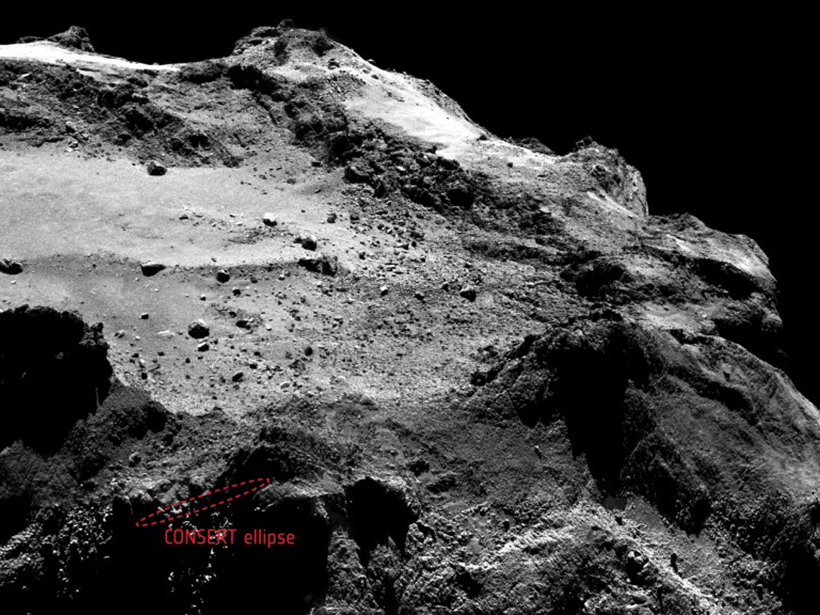Now that the long-dormant comet lander Philae has awakened, Rosetta mission scientists are gearing up to revive the probe’s scientific investigations of its rocky home. Philae scientists will also continue to search for the probe, which bounced twice after it first landed on Comet 67P-Churyumov-Gerasimenko’s surface last November. This past Saturday, the probe woke up from its 7-month hibernation, the European Space Agency (ESA) announced over the weekend.

Using sunlight as a power source, the lander should be able to image the comet’s surface, study the local environment, and take measurements of the atmosphere and the comet nucleus’s physical properties, Hermann Böhnhardt, a Philae lead scientist, told Eos.
When scientists are able to communicate with Philae once again, they’ll be able to begin low-risk science activities, such as studying the comet’s magnetic field, Koen Geurts, a scientist on the landing team at the German Aerospace Center (DLR), told Nature News.
To precisely locate where the lander is on the comet, the Philae team intends to use Rosetta’s Comet Nucleus Sounding Experiment by Radiowave Transmission (CONSERT) instrument, among others, to “improve the landing site location and its uncertainty to below 10 [meters] on the surface,” Böhnhardt added. CONSERT studies the radio waves that are reflected and scattered by the comet’s solid surface.
The washing machine–sized lander officially made contact with ground control via Rosetta, the comet’s orbiting satellite, for 85 seconds on Saturday evening, project scientists said. Once Philae communicates again, mission scientists will be able to figure out what happened to the lander over the last few days.
“Philae is doing very well: It has an operating temperature of −35°C and has 24 Watts available,” said DLR Philae project manager Stephan Ulamec in an ESA blog post. “The lander is ready for operations.”
—JoAnna Wendel, Staff Writer
Citation: Wendel, J. (2015), Philae scientists make plans for revived mission, Eos, 96, doi:10.1029/2015EO031599. Published on 16 June 2015.
Text © 2015. The authors. CC BY-NC 3.0
Except where otherwise noted, images are subject to copyright. Any reuse without express permission from the copyright owner is prohibited.

